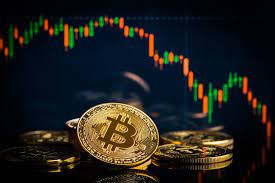
Once heralded as the antidote to the traditional financial system, cryptocurrency has long been pitched as a hedge—an “uncorrelated” asset that thrives in volatility and economic instability. But as institutional money flows into digital assets and global markets become increasingly interconnected, a pressing question has emerged:
Are crypto markets syncing with traditional financial markets—or are they still moving independently?
The answer isn’t as binary as it might seem. It lies at the intersection of macroeconomics, market psychology, institutional behavior, and blockchain fundamentals. Let’s explore how this evolving relationship is shaping investment strategies and challenging long-held narratives about crypto.
📈 The Original Vision: A Hedge Against the System
When Bitcoin was introduced in 2009, it was a direct response to the failures of the global financial system. The idea was radical: a decentralized currency immune to government manipulation, inflation, and central bank policies. Crypto’s early adopters saw it not only as a store of value but also as a safeguard against systemic collapse.
For a while, this narrative held up. Crypto markets moved in different rhythms than Wall Street. Traditional risk factors—interest rates, earnings reports, geopolitical tensions—seemed to have little impact on Bitcoin or Ethereum prices. The crypto ecosystem was seen as a financial outlier, operating in its own parallel economy.
🔗 Enter Institutions: The Tipping Point of Correlation
Things started to shift around 2020.
Major institutions like Tesla, MicroStrategy, Fidelity, BlackRock, and even legacy banks like JPMorgan began taking crypto seriously. Spot ETF discussions emerged. DeFi ballooned. And retail investors, emboldened by stimulus checks and the rise of Robinhood culture, entered the space en masse.
This institutional interest was a double-edged sword.
On one hand, it brought credibility and liquidity to the space. On the other, it tethered crypto more closely to traditional markets. Bitcoin began reacting to macroeconomic data—Federal Reserve decisions, inflation prints, and broader market sentiment.
📊 Key Insight:
According to research by Arcane and CoinMetrics, the correlation between Bitcoin and the S&P 500 peaked at over 0.6 in 2022—a level that many analysts would describe as “strongly positive.” In short, when U.S. equities dipped, so did crypto. When markets rallied, crypto followed suit.
📉 Macro Forces at Play: Why Correlation Rose
Several factors explain the growing synchronization:
1. Liquidity-Driven Risk Appetite
Crypto is often treated as a risk-on asset, similar to tech stocks. When global central banks loosen monetary policy and inject liquidity, speculative investments flourish. When liquidity tightens—such as during interest rate hikes—riskier assets suffer.
2. Institutional Portfolios
Many institutional investors bundle crypto into the same portfolio buckets as high-growth equities. That means during downturns or rebalancing phases, crypto gets sold alongside traditional assets.
3. Algorithmic Trading
Quantitative trading bots now actively operate in both crypto and traditional markets, seeking arbitrage and correlation opportunities. This contributes to intermarket coupling, especially during high-volatility periods.
🧠 Decoupling: Still a Possibility?
Despite this growing correlation, crypto retains characteristics that suggest eventual decoupling is possible, especially over a longer time horizon. Here’s why:
🔒 Fundamental Independence
Crypto operates on its own infrastructure—blockchains, smart contracts, decentralized applications—that don’t rely on Wall Street mechanisms. Ethereum doesn’t need the Fed to execute a transaction. DeFi doesn’t rely on banks for lending. This underlying autonomy sets crypto apart.
🌐 24/7 Market Cycle
Unlike traditional markets, which shut on weekends and holidays, crypto trades 24/7 globally. This nonstop nature leads to independent price discovery and often causes crypto to react faster to geopolitical events or black swan news.
🌱 Emerging Economies and Use Cases
In regions facing currency collapse or political instability (e.g., Argentina, Turkey, Nigeria), crypto is increasingly used for savings and remittances. In such cases, adoption grows regardless of U.S. stock performance.
⚖️ Correlation Isn’t Constant: Key Events That Broke the Trend
While correlation has trended upward in recent years, it’s not immutable. Several moments have reminded investors that crypto can still move to its own beat:
🔥 FTX Collapse (2022)
The implosion of one of crypto’s largest exchanges was a sector-specific crisis. Traditional markets barely blinked, while crypto plunged 20–30% in days.
🌐 Ethereum Merge (2022)
Ethereum’s historic shift from Proof of Work to Proof of Stake (The Merge) sparked ecosystem-specific excitement. While equity markets were flat, ETH outperformed most assets for weeks.
📉 Banking Crisis (2023)
When Silicon Valley Bank and Signature Bank collapsed, Bitcoin actually rallied as confidence in traditional banking faltered. This revived the “digital gold” thesis—suggesting Bitcoin could still serve as a hedge under certain conditions.
🔍 Investor Takeaway: Dynamic Strategy Required
Whether you’re a retail investor, trader, or institution, the key takeaway is this:
Crypto’s correlation with traditional markets is dynamic—not fixed.
In times of global uncertainty and liquidity crunches, correlation tends to increase. In moments of crypto innovation, sector-specific events, or banking instability, decoupling resurfaces.
🎯 Smart investors recognize this nuance. They don’t bet entirely on crypto acting like tech stocks, nor do they cling to outdated notions of total independence. Instead, they analyze macro trends, sector momentum, and on-chain data side by side.
🧮 Tools to Track Correlation
Want to keep an eye on crypto’s relationship with traditional markets? Here are some platforms and metrics:
- CoinMetrics: Tracks BTC/S&P 500 correlation indexes.
- TradingView: Compare asset charts and overlay macro indicators.
- The Block Research: Institutional sentiment and liquidity reports.
- Glassnode: On-chain activity versus market sentiment.
🔮 The Future: Hybrid Correlation in a Maturing Ecosystem
As crypto continues to mature, the market may become more segmented, with different assets behaving differently.
- Bitcoin may increasingly correlate with macro indicators and serve as a store of value.
- Ethereum could trend independently based on network upgrades, DeFi activity, and staking.
- Altcoins and NFTs might behave more like venture capital bets or micro-cap tech stocks.
The endgame? A multi-speed crypto economy where correlation varies by asset class, user base, and use case.
📌 Final Thoughts: Sync or Split?
So, are crypto and traditional markets merging into one symphony or dancing to separate beats?
The answer lies in both worlds. While Wall Street and Web3 now share more rhythms than ever before, crypto’s core traits—decentralization, 24/7 trading, on-chain mechanics, and grassroots adoption—ensure it will never fully mirror the old guard.
In the end, understanding when crypto correlates—and when it doesn’t—may be the ultimate edge in navigating today’s complex investment landscape.

Madeleine Roberts is a tech culture writer who explores the social and philosophical implications of blockchain and digital currencies. From the NFT boom to DAOs and metaverse economics, Madeleine dives into how crypto is reshaping identity, creativity, and ownership in the digital age. Her unique narrative style brings fresh perspectives to the crypto conversation.






